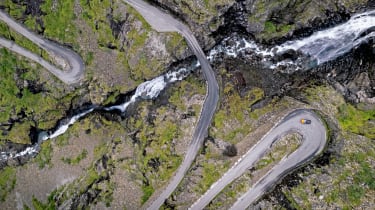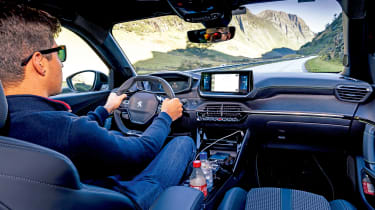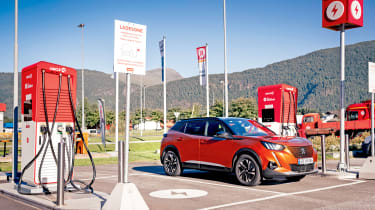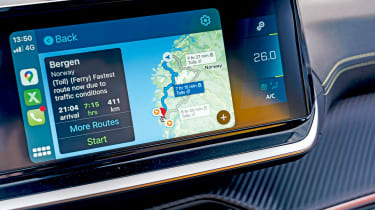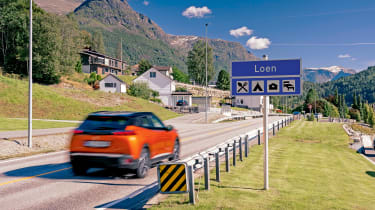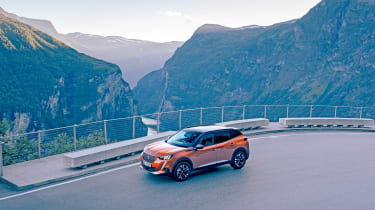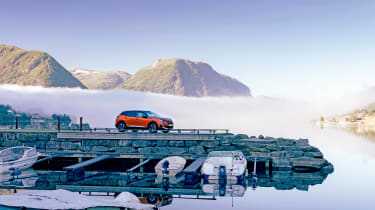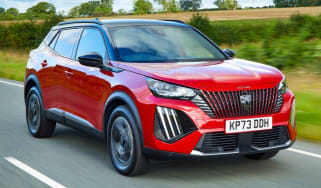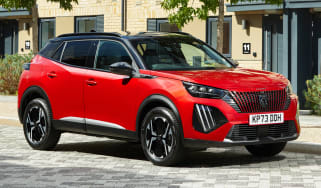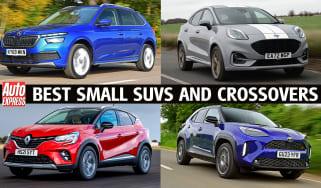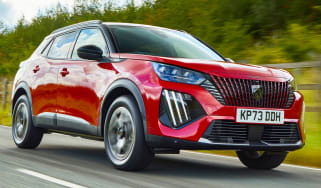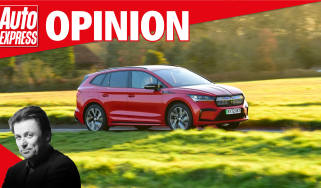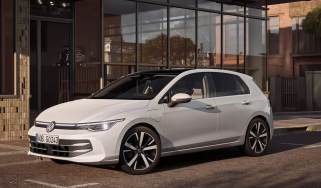Norway and electric cars: why the country loves EVs
More than 50 per cent of new cars sold in Norway are electric, and a further 27 per cent are hybrids. We take a road trip find out what’s driving this trend
There’s no avoiding the fact that the switch to electric vehicles brings a few changes with it. EVs still have significantly higher list prices than their petrol and
diesel counterparts, and there are further challenges around market share and charging infrastructure. Readers of Auto Express will be well aware of the constant effort from both the Government and industry to improve the viability of EVs in the UK. Currently, only around 14 per cent of new cars sold and around two per cent of cars on the road in the UK are fully electric.
When it comes to EV adoption, there’s one country that shines brighter than all others: Norway. More than three quarters of new cars sold there each year are electric, with EVs making up around a quarter of the country’s total car fleet, and it’s a figure that’s rising.
How did Norway embrace the electric car?
Norway is looking to ban the sale of petrol and diesel cars by 2025 – five years sooner than the UK. But this kind of mass adoption doesn’t happen overnight; Norway has been championing the electric car for almost three decades now.
Indeed, the incentives for EV buyers in Norway put the British government’s recently reduced plug-in car grant to shame. As well as being exempt from the country’s 25 per cent VAT rate, electric cars in Norway aren’t subject to road tax, while drivers also benefit from reduced road and ferry tolls, as well as discounted parking. EV owners can even use bus lanes without fear of retribution.
But how does a country with a daily oil surplus of almost two million barrels find itself in such a forward-thinking and eco-conscious position?
It all happened rather quickly, as Christina Bu, Secretary General of the Norwegian Electric Vehicle Association tells us, contrasting her home nation’s progress with one on the other side of the world. “In Australia at the moment there is a lot of debate on EVs. There are a lot of myths and a lot of political anti-EV communication, because the coal lobby is very strong,” she says.
“That could’ve happened in Norway, too, but it didn’t really. In the nineties no one really cared, and suddenly around 2010-11 something started happening. Those who could’ve been negative didn’t really see it happening, the transition was so quick.”
Furthermore, the majority of Norway’s power needs can be met by renewable energy – almost all its domestic electricity comes from hydropower – so its reliance on oil for feeding its national grid is next to nothing. Contrary to popular belief, the money it makes from fossil fuels has had little to do with subsidising zero-emission transport solutions, or boosting the public charging infrastructure.
“The rest of the world thinks ‘Norway can afford this because they have all that oil income’,” Bu tells us. “But the fact is, we have had really high taxes on cars for years. Norway has an income to the state budget that other countries do not have. What Norway has done, however, is to not tax some cars – and those are the EVs. So it’s not really subsidies, it’s exemption from taxes,” she adds.
We need to find out first hand what they’ve got right and we’ve got wrong – as well as if there’s anything we’re doing better than them – so we hopped over the North Sea to see what we can learn about electric cars from the Norwegians.
Leg 1: Bergen to Skei
Our point of arrival in Norway is Bergen, the country’s second-largest city. Even as we walk through the airport and look out of the window at a nearby car park, we notice a high proportion of EVs in the mix – many more than you would typically see in a similar setting in the UK.
The other thing that is immediately apparent as we are collected from the airport and take our first look at the surrounding area and roads is how modern and well maintained everything is. We British tend to be fairly self-deprecating when it comes to our own country – yet while our roads are undeniably in shoddy condition and our railways are a joke, our other infrastructure often compares favourably with other European countries such as France and Italy.
Norway blows us away in every respect, though; nothing looks knackered or run-down. The buildings are new and shiny, while the roads are flawless. Of course, it helps that the Norwegians are swimming in cash; the Government Pension Fund of Norway is the world’s largest sovereign wealth fund, worth around $250,000 (approximately £210,000) per citizen. Contemplating this, we are dropped off at a Peugeot dealership. Not much difference here from the UK; new cars are sold from huge, impressive glass buildings in many countries, and Norway is certainly no exception.
Outside the impressive building sits an all-electric Peugeot e-2008 GT in a stunning shade of Fusion Orange, which will serve as our mode of transport for our journey across Norway. The Peugeot dealership has a rapid charger right outside, so we take the opportunity to make sure we know how to use it. Having used plenty of public chargepoints in the UK, we’d assumed there would be no complications, but this doesn’t prove totally correct.
At first glance, this charger – operated by a firm called Eviny – looks impressive, boasting a rate of 200kW. To pay, however, we require a special RFID fob, which the dealer kindly provides and demonstrates to us. Climbing behind the wheel of the e-2008 and setting off, we think about what we’d just experienced.
It was a question we’d later put to Anette Berve from the Norwegian Automobile Federation. She explains: “Up until summer 2022, we had three or four different pricing structures in Norway – we had kroner per minute, kroner per kWh and a combination of the two. Trying to work out where it was cheapest to charge was a nightmare for consumers and again, the government didn’t want to regulate it.
“We ran surveys upon surveys to make the charging operators and the government understand that consumers needed an easier pricing system. What we’re still left with, though, is four or five different payment types.
Some use RFID cards or tags, some allow regular card payments and others require SMS or app payment. “No one knows how to regulate that, whereas in the UK you require all new chargers to allow card payments. Even then, that only applies to the new chargers – what about the old ones? Consumers are left with an inconsistent system.
“One of the things we have advocated for as a European standard is running the digital payments through apps, but all charging operators in all countries should have open APIs [operating software] so any charging app can interface with any charging station in any country. So you, coming over from the UK, could have just brought your favourite app and used it here in Norway.”
This sounds like a sensible idea that would have made our lives easier as visitors to Norway. Although public charging in the UK can be complicated by the need to download apps or create accounts, straightforward contactless payment is becoming increasingly prevalent.
We drive north out of Bergen, meeting some fairly heavy congestion, before getting out to more open roads where there is less traffic – unsurprising, because there’s only a population of 5.4 million people here. Driving in Norway is quite an experience; there’s spectacular scenery almost constantly and the roads are impeccably smooth. And despite a lack of police cars and speed cameras, driving standards are remarkably good as well. We wouldn’t see a single example of road rage or rule-breaking the entire time.
As for our e-2008, the compact SUV performs well. Comfortable and quiet, it covers mile after mile with no fuss and doesn’t seem to lose range badly, despite the cold temperatures we encounter at times. Of course, Norway is a country with many bodies of water, so ferry crossings are sometimes required. These run regularly and swiftly, and the boarding procedure couldn’t be simpler – you park up in a queue, drive on when the gate opens and drive off at the other end. Payment is taken automatically via an account you set up for your car.
Our first ferry crossing takes us from Oppedal to Lavik, and after we disembark we decide to give the e-2008 its first top-up. Right by the terminal is a 50kW Mer chargepoint, which we plug into and activate via a phone app. We charge the Peugeot from 60 per cent to 80 per cent battery here, before carrying on our way.
Charging diary entry: Lavik
- Type: Mer 50kW CCS
- Charge: 60% to 80%
- Time: 15 minutes
- Cost: 79.20 kroner (£6.58)
We’ve covered 77 miles by this point and carry on another 21 miles to have a gaze at the glorious Huldefossen waterfall, but our thoughts are set on how easy our first charging stop has been. Is this always the case in Norway?
“We have more than 500,000 electric vehicles and there are 4,500 CCS and CHAdeMO charging stations in Norway – and that’s just rapid charging; I haven’t counted the slower Type 2 chargers, of which there are around 20,000,” Berve informs us. “The EU has a goal that there should be around 10 EVs per chargepoint, but at the moment we have around 120 EVs to a chargepoint, which is taking a massive toll on the transition to EVs.
“The Norwegian government had a subsidy system to boost charging infrastructure in the beginning, but that has slowly diminished over the years and it’s now market-based. The government has been reluctant to control the building of charging stations. It has struggled to get anyone to build charging stations in the far north, even with a 100-per-cent subsidy, because it’s a scarce population with harsh winters.
“Some of our highways are slowly becoming profitable for charging hubs, but most of our country is made up of really small places where there isn’t a lot of traffic and charging stations there will probably never be profitable.”
“Reliability is absolutely a problem here, too. It seems like the hardware is getting better and more reliable. They’ve changed out the earlier chargers and moved on to newer ones. But again, the government has been very reluctant to manage the infrastructure.
“Our organisation has suggested that there should be a minimum downtime for each charging operator and that it should only be a certain time before chargers are fixed, but there are no rules at the moment that regulate that. Mostly I would say it’s the reputation of the charging operator – if they’re known for having reliable chargers or not.”
Anyone who has used the UK’s public charging network will understand the frustration of reaching a chargepoint, only to find another vehicle already plugged in and no other unit available. Berve’s comments suggest this could be an even bigger problem in Norway, and we almost learn this for ourselves when arriving at our overnight stop in Skei.
Our hotel has rapid chargers in its car park – in the UK, you’d be lucky to find a 7kW Type 2 unit in such a setting. We pull up to find two other EVs already plugged in, and for a moment we wonder if we might have to come back later. It turns out that there are three rapid units bunched together, though, so we squeeze the e-2008 into the last spot and connect it, before heading inside (we’d come back once the battery was full to disconnect and free the charger up for someone else).
Charging diary entry: Skei
- Type: Mer 50kW CCS
- Charge: 45% to 100%
- Time: One hour
- Cost: 176.16 kroner (£14.63)
Leg 2: Skei to Geiranger
Waking up bright and early the following day, we head to the hotel car park to get back into the e-2008’s cockpit. We have time for a quick look at the other guests’ vehicles while we were there, and the Norwegians’ love of EVs is clear. In addition to all the usual electric cars we’re used to seeing in the UK, we spot a few that aren’t so common. There appear to be a huge number of Kia Soul EV Mk1s – a car that was a rarity on our shores even when it was brand new – and Chinese imports such as the Xpeng G3 and BYD Tang that we simply don’t get in this country were also around.
That morning, we’d have our chat with Berve, who outlines to us the incentives that have historically been offered to Norwegian EV buyers and how they’re changing. “We still have subsidies for EV purchases, but they’re tightening,” she says. “Up until now, we’ve had no VAT on electric vehicles and EVs have been exempt from other annual taxes. Those are being reintroduced now, though – VAT is the big one and it means a big price hike for luxury EVs, like Teslas.”
Back on the road, we travel 41 miles to Loen – a village set at the end of a massive fjord and surrounded by mountains. It is here where we have our first bad experience with a Norwegian chargepoint.
This time, it’s a 200kW CCS unit that’s operated by Norwegian power company BKK. It requires us to create an account and enter our bank card details. We try repeatedly to get it working, but no matter what we do, it simply won’t accept payment from our British bank card. Eventually, we give up and go for lunch.
Charging diary entry: Loen
- Type: BKK 200kW CCS
- Charge: Failed charge attempt – UK bank card not accepted
Loen has a cable car that takes you more than 1,000 feet up to the top of Mount Hoven, where the restaurant offers views of the breathtaking scenery. Back on the ground, we make our way to the nearby village of Stryn, where we have better luck topping up the e-2008.
Charging diary entry: Stryn
- Type: Mer 50kW CCS
- Charge: 67% to 80%
- Time: 10 minutes
- Cost: 41.08 kroner (£3.41)
It’s another 52 miles on to our stop for the night at Geiranger, where we have yet more incredible fjord views. All this water reminds us of something Berve had mentioned about hydro-electricity. That power source, plus the fact that Norway is a major oil producer, means the country has benefitted from cheap energy for a long time. But the current global crisis is having its effect.
“Our government estimates we will have an all-electric car fleet in 2030 or 2035 and that we will use renewable energy tariffs for charging them,” Berve explains. “They’ve changed how we pay our electricity bills to stimulate smart charging – there’s a sort of rush-hour tax on using electricity at the same peak time as everyone else. We want to make sure that everything doesn’t collapse when all cars are electric. For the first time, we’ve had quite an extreme increase in electricity prices. Historically, we’ve been lucky because Norway has produced so much power that we’ve had extremely cheap prices – consequently, we and Sweden are the two worst European countries at saving energy. Suddenly, our prices have increased six times. One of the key selling points of EVs is that people save money, but now they’re calculating that they might not. This could be a potential hindrance to electrification.”
Done gawking at our surroundings, we arrive at our hotel for the night, where we’ve booked to use a 7kW charger during our stay for a flat fee of 150 kroner (£12.45).
Charging diary entry: Geiranger
- Type: 7kW Type 2 domestic unit
- Charge: 25% to 100%
- Time: Overnight (approximately nine hours)
- Cost: 150 kroner (£12.45)
Leg 3: Gerainger to Ålesund
Another beautiful Norwegian morning, and we set off once again in the e-2008. This is the final day of our journey and the Peugeot has really impressed us. It seems to tick every box that a family-friendly, relatively affordable small electric SUV should. It’s 15 miles from Gerainger to Eisdal, where we drive aboard another ferry and are deposited in Linge.
It’s then a further 24 miles to one of the most incredible roads we’ve ever seen – Trollstigen. Opened in 1936 by King Haakon VII, this route has a 10 per cent gradient and is made up of 11 hairpin bends as the road winds down a dramatic mountainside. The name Trollstigen translates to “troll path” – and some rather creepy troll statues sit at the bottom end of the road to illustrate this. The e-2008 isn’t a performance car, but it handles the tricky route admirably, getting us safely to the bottom without crashing over a cliff edge... or worse, being kidnapped by a monstrous troll.
Its reward is a charging stop in Åndalsnes, a relatively large town by Norwegian standards. Here, we find the most powerful charger yet – a 300kW unit on a petrol station forecourt, all operated by US supermarket chain Circle K. We plug in and have no problem activating the charger via our smartphone. We eat lunch within view of the chargepoint and notice that we’ve actually grabbed the last available spot. A queue then forms, with a driver in a Tesla Model 3 waiting for someone to depart before he can plug in.
Charging diary entry: Åndalsnes
- Type: Circle K 300kW CCS
- Charge: 65% to 97%
- Time: 30 minutes
- Cost: £13.48 (payment was taken in Sterling rather than kroner)
This proves to be our e-2008’s final charging stop, because we easily have enough juice to cover the final 61 miles from Åndalsnes to our final destination. Ålesund is a port town, and is another example of how the Norwegians keep everything beautifully maintained and tidy. It’s also rather built-up, and we recall what Berve had said about Norway facing similar challenges to the UK when it comes to on-street charging.
“We’ve got an increasing number of chargers in urban areas, but we still have a long way to go,” she’d told us. “Most people who have purchased an EV have access to a home chargepoint, so we haven’t really seen the difficulty of what it’s like to own an EV without a charger.
“But we have numbers indicating that it will absolutely be a problem. There are a lot of people who don’t have access to a charging point – it needs to get better for people who have street parking, as most of the charging infrastructure in cities has been built around parking garages and commercial areas.”
This isn’t a problem we have to contend with, though. We park the e-2008 up by Ålesund’s waterfront and reflect on what we’ve learned. Yes, Norway has beaten every other country to the punch when it comes to EV adoption. But the consolation is that the UK has a better ratio of EVs to chargers, as well as a simpler payment system. There are lessons both countries can learn from one another, it seems.
Click here for our list of the best electric cars on sale in the UK...



